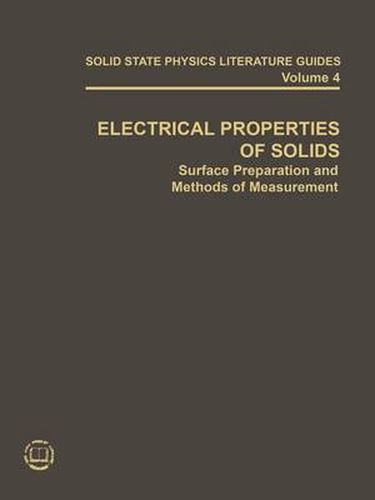Readings Newsletter
Become a Readings Member to make your shopping experience even easier.
Sign in or sign up for free!
You’re not far away from qualifying for FREE standard shipping within Australia
You’ve qualified for FREE standard shipping within Australia
The cart is loading…






This title is printed to order. This book may have been self-published. If so, we cannot guarantee the quality of the content. In the main most books will have gone through the editing process however some may not. We therefore suggest that you be aware of this before ordering this book. If in doubt check either the author or publisher’s details as we are unable to accept any returns unless they are faulty. Please contact us if you have any questions.
Since 1963 the Research Materials Information Center has been answering inquiries on the availability, preparation, and properties of ultrapure inorganic research specimens. It has been possible to do this with reasonable efficiency by searching an automated coded microfilm collection of the report and open literature and of data sheets and question naires provided by commercial and research producers of pure materials. With the growth of the collection to over 70,000 documents and the increase in the demand for more general background information, it has been necessary to compile bibliographies on an increasing variety of subjects. These have been used as indexes to the microfilmed documents for more efficient searching, and in the past distributed in response to individual requests. However, their size and number no longer permit so casual and uneconomic a method of distribution. The ORNL Solid State Physics Literature Guides is a practical alternative. Organization The subject organization of the bibliography is given by the Table of Contents. Each section is preceded by a collection of reviews, bibliographies, and general papers (i.e., those dealing with methods or equipment rather than single materials, or with such a wide variety of materials that no subsection was appropriate). Coverage is generally from 1960 to mid-1970. Emphasis is on inorganic materials.
$9.00 standard shipping within Australia
FREE standard shipping within Australia for orders over $100.00
Express & International shipping calculated at checkout
This title is printed to order. This book may have been self-published. If so, we cannot guarantee the quality of the content. In the main most books will have gone through the editing process however some may not. We therefore suggest that you be aware of this before ordering this book. If in doubt check either the author or publisher’s details as we are unable to accept any returns unless they are faulty. Please contact us if you have any questions.
Since 1963 the Research Materials Information Center has been answering inquiries on the availability, preparation, and properties of ultrapure inorganic research specimens. It has been possible to do this with reasonable efficiency by searching an automated coded microfilm collection of the report and open literature and of data sheets and question naires provided by commercial and research producers of pure materials. With the growth of the collection to over 70,000 documents and the increase in the demand for more general background information, it has been necessary to compile bibliographies on an increasing variety of subjects. These have been used as indexes to the microfilmed documents for more efficient searching, and in the past distributed in response to individual requests. However, their size and number no longer permit so casual and uneconomic a method of distribution. The ORNL Solid State Physics Literature Guides is a practical alternative. Organization The subject organization of the bibliography is given by the Table of Contents. Each section is preceded by a collection of reviews, bibliographies, and general papers (i.e., those dealing with methods or equipment rather than single materials, or with such a wide variety of materials that no subsection was appropriate). Coverage is generally from 1960 to mid-1970. Emphasis is on inorganic materials.